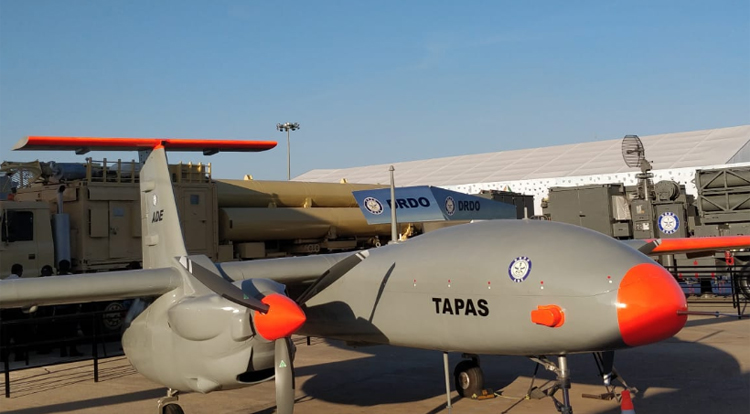SOURCE: RAUNAK KUNDE / NEWS BEAT / IDRW.ORG


India’s endeavour into the development of unmanned aerial vehicles (UAVs) has been marked by ambitious projects such as the Rustom-II (Tapas), designed to be a medium-altitude long-endurance (MALE) UAV. However, recent reports suggest that this ambitious venture might never see production due to a myriad of challenges faced by the Aeronautical Development Establishment (ADE) in meeting the Preliminary Staff Qualitative Requirements (PSQR) standards.
One of the major stumbling blocks for the Rustom-II (Tapas) program was its failure to meet the Preliminary Staff Qualitative Requirement (PSQR) requirements. The UAV was expected to reach an altitude of 30,000 feet and demonstrate a flight time of 20 hours. Regrettably, the vehicle fell short of these benchmarks, leading to reconsideration of its viability for production.
Beyond the PSQR challenges, the Rustom-II (Tapas) faced issues related to its airframe design. The design was deemed sub-optimal, resulting in drag problems that adversely affected the overall performance of the UAV. Furthermore, the design shortcomings made it difficult for the vehicle to meet various program benchmarks, rendering it unsuitable for weaponization.
Perhaps the most significant hurdle encountered by the Rustom-II (Tapas) program was its excess weight. The airframe, weighing around 2,400 kg by the end of 2015, posed a substantial challenge for ADE scientists. They were tasked with reducing the weight to approximately 1,700 kg in the final version to accommodate necessary sensor packages.
In an attempt to address the weight issue, ADE switched the UAV’s power source from a 115HP Rotax engine to a 180 HP Austro engine in 2018. However, this move inadvertently led to an increase in the UAV’s weight. The new engine, weighing 186 kg, coupled with the additional weight of the engine cowling, added further burden to the airframe.
Despite collaborative efforts by ADE and Hindustan Aeronautics Limited (HAL) to optimize internal systems and shed weight from the airframe, the Rustom-II (Tapas) remained over 300 kg more than the desired weight. This, combined with the additional weight from the engine, presented an insurmountable challenge for the scientists. Switching to a more powerful but heavier engine exacerbated the problem, adding further ballast to the already overburdened airframe.
The future of the Rustom-II (Tapas) program looks uncertain, with the Indian authorities contemplating its closure. The focus has shifted to the development of the Archer-NG, the successor program, as a more promising alternative. The challenges faced by Rustom-II (Tapas) underscore the complexities involved in the development of advanced UAVs and the importance of meeting stringent specifications for successful deployment in defence operations.
NOTE : Article cannot be reproduced without written permission of idrw.org in any form even for YouTube Videos to avoid Copy right strikes. Websites doing illegal reproductions will get DCMA and Legal Notices.